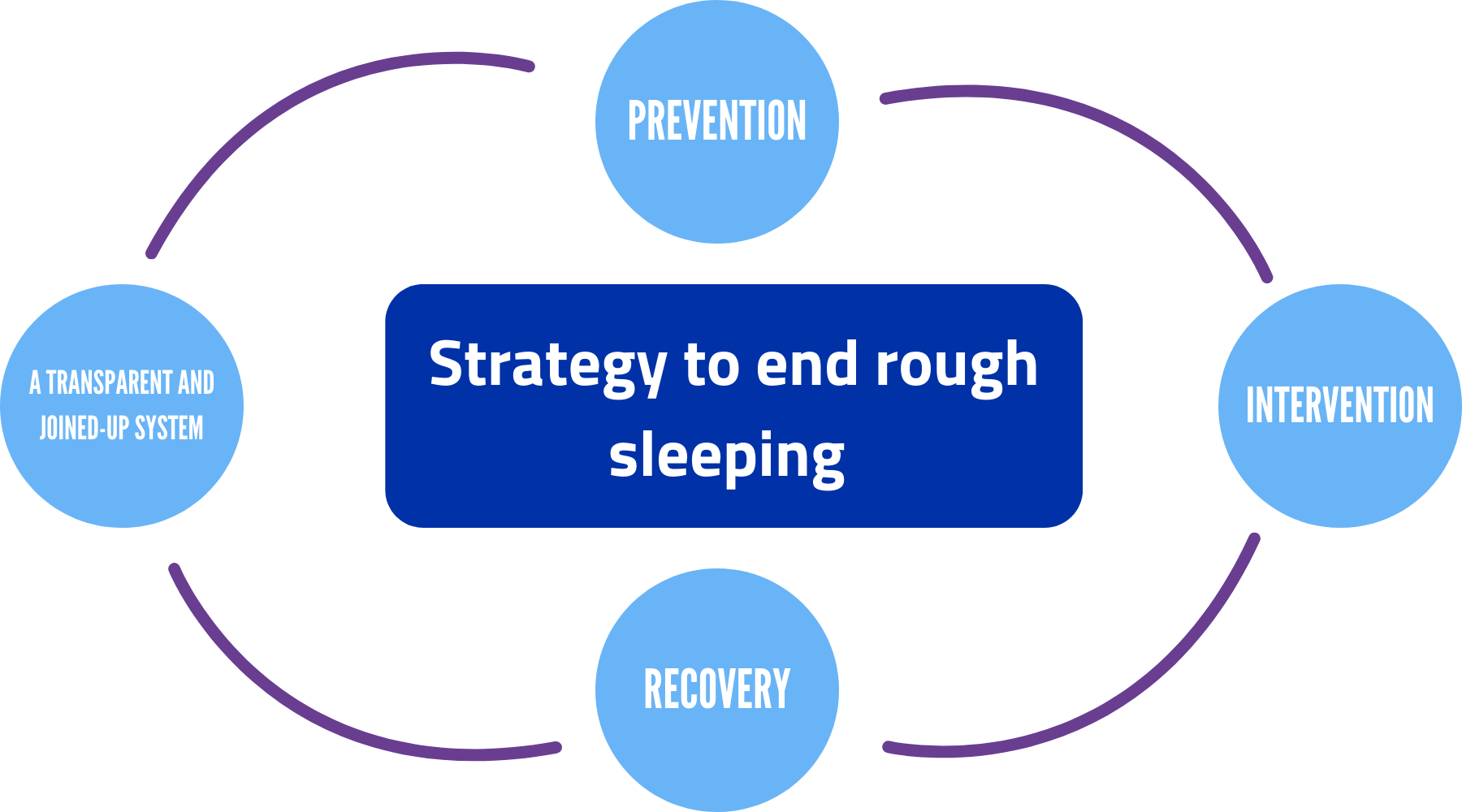On the 5th of September 2022, the Government released their new strategy for ending rough sleeping for good. This begs the question “is this actually possible?”
You may have noticed that we have taken some time to prepare our response. This is because of very significant national events over the past couple of weeks. It’s also because the Government’s strategy Ending Rough Sleeping For Good is 120 pages long! However, as a result, it does reflect the complexity of rough sleeping and it indicates the seriousness with which the Government treats these issues.
The new definition for ending rough sleeping from the government is as follows:
‘The Government considers rough sleeping will have ended when every local area ensures rough sleeping is prevented wherever possible and, where it cannot be prevented, it is a rare, brief and non-recurring experience’.
We welcome the phrase ‘rare, brief and non-recurring’. It describes what an organisation like The Connection can realistically expect to achieve in our work to support people sleeping rough to find a place to call home. It recognises the current realities of homelessness for many and so it presents an ambitious yet achievable goal.
The four aspects of the Government’s approach for ending rough sleeping are laid out as:

The strategy has a strong emphasis on prevention which is incredibly important.
The longer someone is homeless, the more traumatic it can be to them personally and the more resource-intensive it is to support them back into accommodation.
The Connection is there when everything else has failed, and when people feel they have nowhere else to turn – so it can be difficult to see our role here. The prevention agenda laid out in the strategy ensures that no-one leaves a public institution to the streets.This brings to mind the times we have undertaken outreach work with someone found sleeping in a doorway in a hospital gown, having self- discharged.
We also have experimented with prevention schemes through our Systems Change project, such as in response to prison discharge situations – working well in advance with prisons to line up appropriate interventions swiftly on someone’s release to avoid a return to the streets. As our work in prevention expands, this area of strategy could support us greatly.
Most of our work focuses on short and long-term intervention. Returning to the ‘rare, brief and non-recurring’ definition, The Connection’s role is to make any period of rough sleeping as short as possible.
We want to ensure that people move into accommodation that is sustainable for the long term so that they don’t return to the streets. To do this, we need access to suitable and affordable accommodation.
The Government is investing in creating additional housing stock but is it enough?
This is something we will be monitoring as the strategy is implemented.
The focus on recovery is also firmly in our territory. The strategy recognises the complex network of drivers that cause rough sleeping, including the need for treatment.
The reality is that the majority of the people coming to see us have either a serious mental health problem or a significant struggle with addiction – and often both.
When I first started working at The Connection, I used the term ‘recovery’ a lot. Colleagues explained to me that it implies there was once a time when things were OK. Very sadly, I have learned that for some people, there never was an ‘OK’. Many people who come to us have never known a period of stability, security and wellness in their life.
With this in mind, we welcome the investment in treatment along with the fund for innovation. In our experience, traditional treatment responses are not well suited to the level of complexity that our clients present.
Our weekly Outreach Clinic, working in partnership with health providers, was an experiment that has now been successful in moving dozens of people into treatment and accommodation. It is a flexible drop-in service where people can access all sorts of support services in one go. This flexibility is essential when working with people who are often not able to keep appointments. We are researching additional alternative treatment models in order to make proposals for further innovative approaches over the next couple of years.
An important question for us is this: If there was no service provision at all for people sleeping rough and we were going to start from scratch, would we design what we have at the moment?
We have a responsibility to people sleeping rough to do the best job we can. This means that as well as focusing on our own provision, we must attend to the wider system of partners and always look for ways to do things better together. This is why we are part of the Westminster Homelessness Partnership.
As part of our own internal systems change, The Connection is adopting a way of working which reflects the fundamental importance of building relationships of trust with people sleeping rough. This is the foundation for all the other actions for people to find a place to call home. We are also committing to a much greater recognition of the experience of people who have slept rough as next step on from our client involvement activity.
And Finally
The Ending Rough Sleeping For Good strategy presents a comprehensive and ambitious plan that works to build on the progress that was made during the pandemic response.
For the time being, when people ask me if it is possible to end rough sleeping, my answer is “no”. The causes of homelessness reflect both structural issues in our society and individual circumstances and it is complicated. However, I am very heartened to be offered the challenge to join forces and make it ‘brief, rare and non-recurrent’ because that is definitely achievable. I look forward to seeing how this strategy accommodates this unifying goal.
